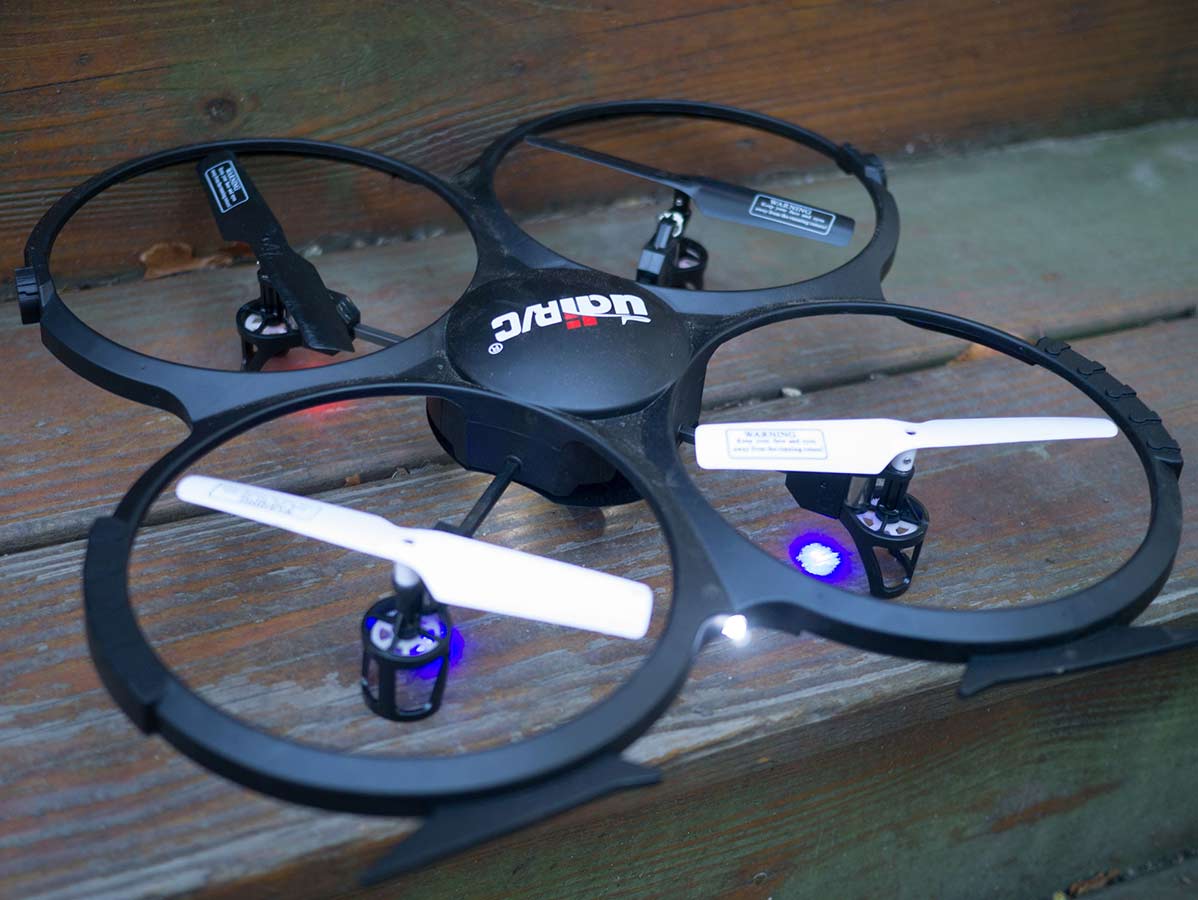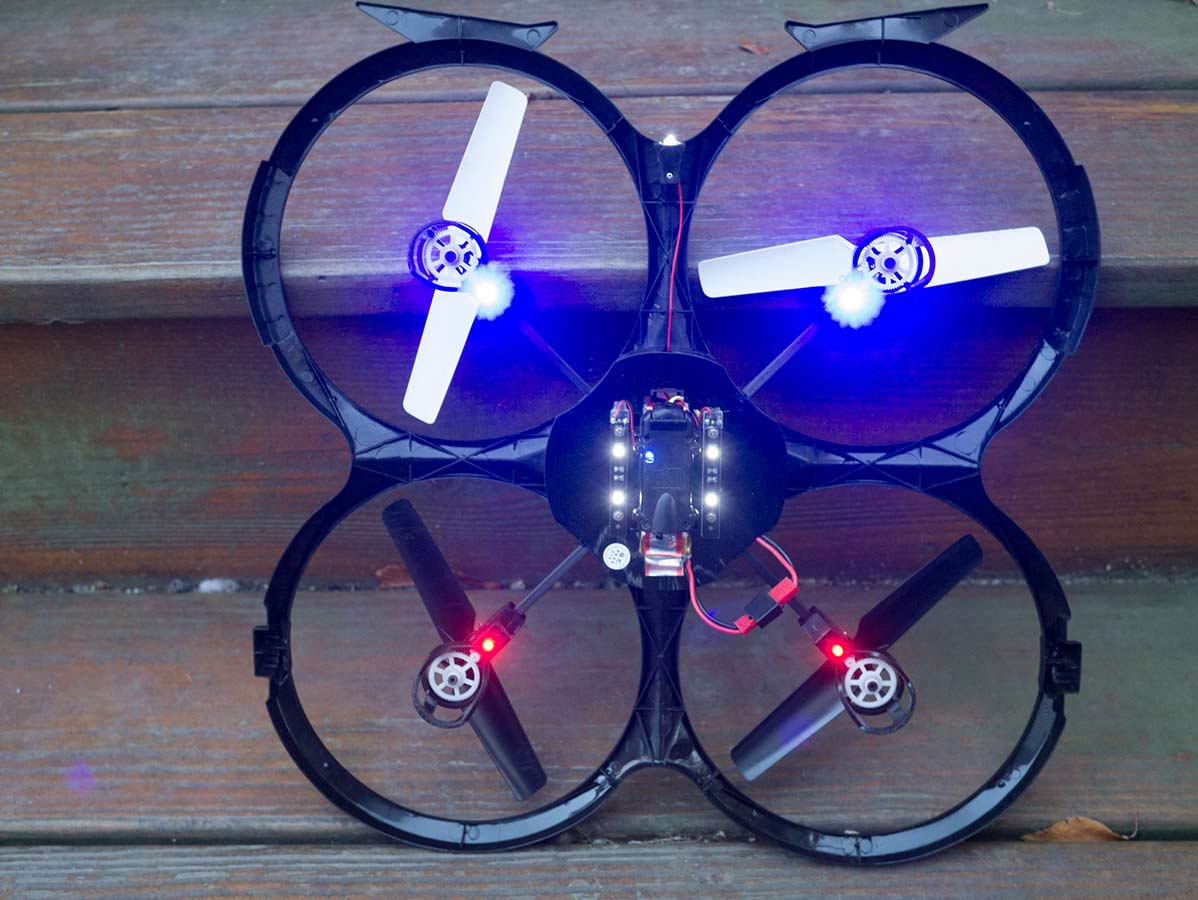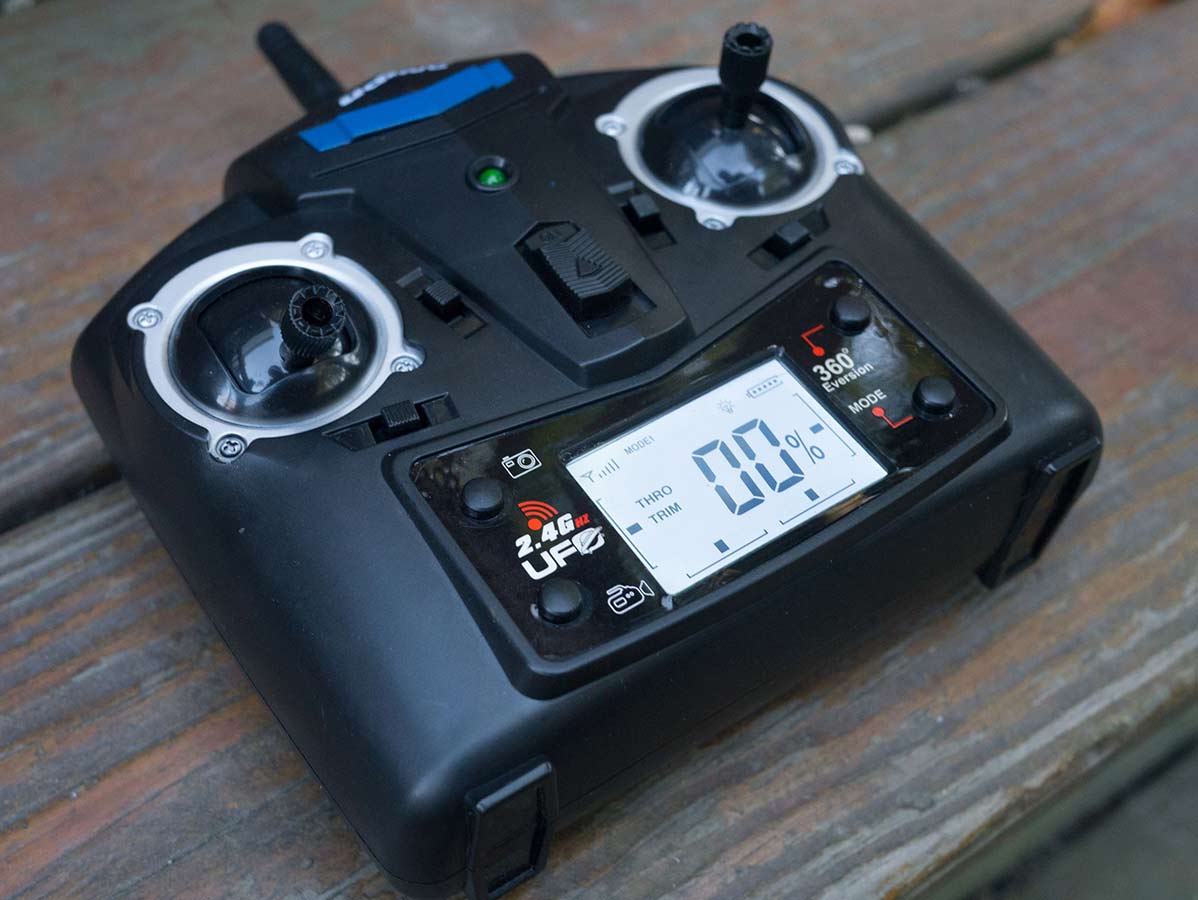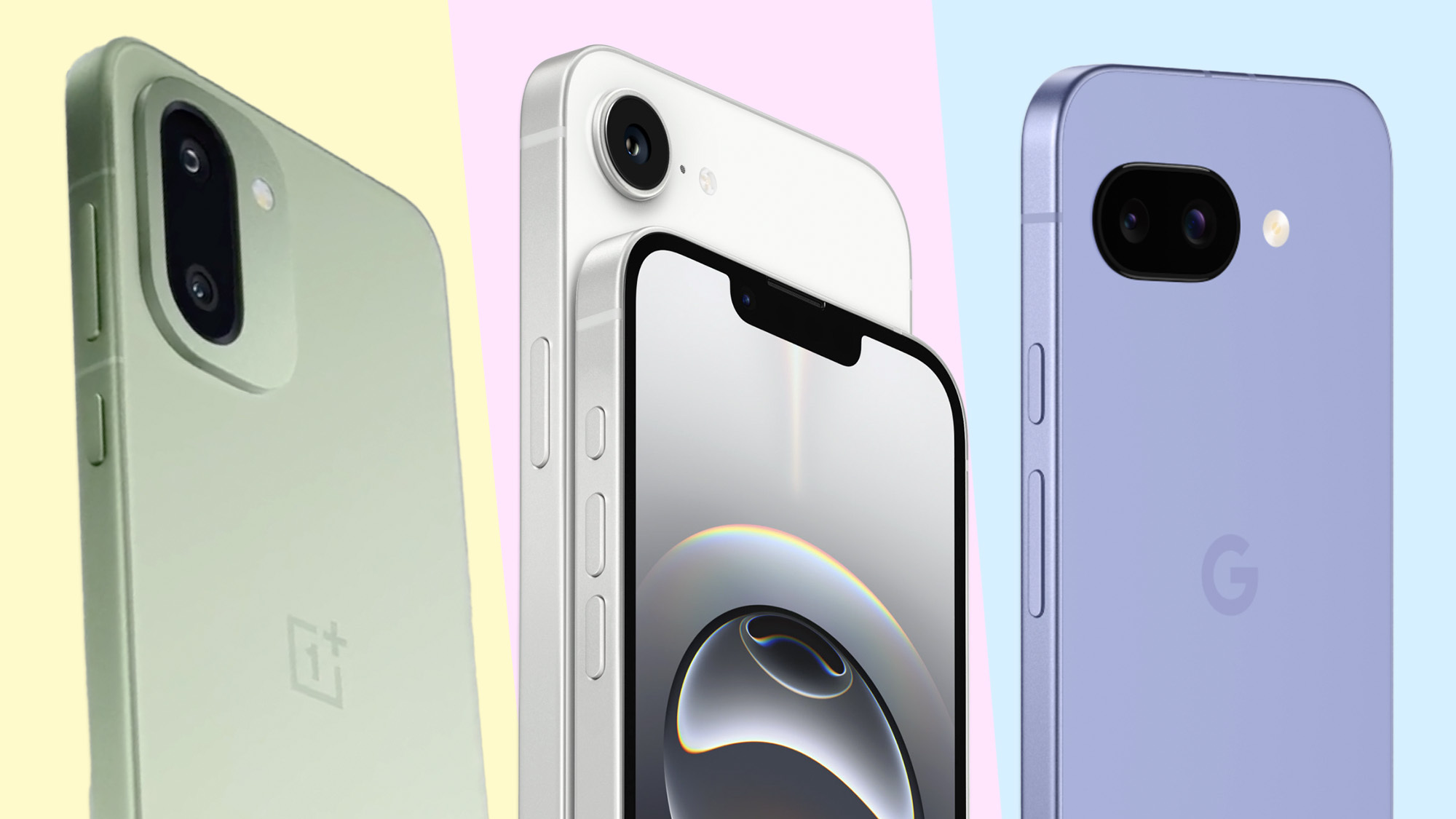Tom's Guide Verdict
The UDI U818A is a great pick for aspiring pilots who want to control the flight themselves and take video on a limited budget.
Pros
- +
Easy to fly
- +
Fast and quick turning
- +
Very affordable
Cons
- -
Lightweight construction
- -
Short battery life
- -
Lackluster images and video
Why you can trust Tom's Guide
When it comes to flying drones and quadcopters, there are two schools of thought. One holds that you should let the computers do all the hard work. The other holds that the pilot should be firmly in control, keeping the vehicle under human control. The UDI U818A ($47.99) represents the second school: This bare-bones quadcopter relies on the skills of the person holding the remote. It offers a few frills, but keeps its controls simple and fun to fly. While it is far from perfect (and the video quality is less than impressive), this is a great pick for aspiring pilots who want to be in control of their flights.
Design
Minimal is the word that springs to mind for the design of the UDI U818A. There really isn't a lot there. The frame (which also surrounds and protects the rotors) is made of light, thin plastic, with the electronics fitted in a small cavity underneath the center.

The small, 500mAh battery slides tightly into a holder on the bottom of this, to which the camera is also attached. The camera is small, a flat lozenge-shaped lump that connects to the body by power wires. The microUSB card that stores the video and still images fits into one side.

The rotors of the UDI U818A are similarly minimal, 5.25 inches in diameter and made of the same, light plastic. Most low-end quadcopters use friction to attach the rotors to the motor shaft, but this one uses a small screw to lock them in place. This makes them less likely to pop off, but also makes them harder to replace. A small screwdriver, for this purpose is included, along with a spare set of rotors.

A number of LED lights are placed around the frame of the quadcopter, including two white LED strips under the center, blue and red lights on the motors (indicating front and back, respectively) and a single white forward-facing LED.
The UDI U818A comes with a short printed manual, but the poor English translation makes this mostly useless, with descriptions like "four direction rolling mold on-off" for the stunt button and warnings such as "enough room is need for this motion, or danger may occur" about the stunt mode.
Controller
The boxy controller for the U818A is a little more opulently designed, sporting a large number of switches on its plastic exterior. On the shoulders are buttons for turning the LED lights on and off and for putting the quadcopter into stunt mode. On the front of the controller, there are a number of buttons surrounding the LCD display on the front.
Get instant access to breaking news, the hottest reviews, great deals and helpful tips.

These buttons take a photo, start and stop video, flip the quadcopter and change the flight mode. The LCD shows such data as battery level, signal strength and the amount of thrust currently being applied. The two control sticks are above this, offering the usual control layout: left for thrust and direction, right for forward/back and left/right.
The controller and quadcopter communicate over a 2.4-GHz radio signal. That is the same frequency band as Wi-Fi networks, but we had no issues with interference from Wi-Fi networks. I experienced good range, as far as 30 to 40 feet away. You cannot control this quadcopter from a cellphone or other Wi-Fi device; the controller is the only device that can do this.
MORE: Best Drones
The controller weighs just more than 10 ounces. It fits well into my hand, with my thumbs sitting naturally on the control sticks and my index fingers on the shoulder buttons. I could reach the other buttons (such as the photo and video buttons, next to the LCD screen) with my thumb. It is powered by four AA batteries that fit into a space in the back. We used a single set of batteries for several hours of flying without them running out. Like most cheap quadcopter controllers, it feels cheap and plastic-y, but it is comfortable to use.
Flying
The UDI U818A is a fun quadcopter to fly. It has the advantages of both smaller, lighter quadcopters (speed, quick maneuvering) and the advantages of larger quads: large, widely spaced rotors make it more stable in flight. Like its smaller siblings such as the Parrot Airborne or the Blade Nano RTF , this drone is buffeted by even very light winds, and if you bump into something, the flexible frame bends and hits the rotor blades, sending it spiraling out of control.

Two flight modes are available. Mode one limits the turning and climbing speed of the quadcopter for beginners. Mode two opens up the throttle, providing full access to the very fast turning and climbing speed that it offers. I would definitely recommend that you stick with Mode one until you get a feel for this zippy quadcopter, as it is easier to lose control in Mode two and send it out of control.
I would definitely recommend using Mode one until you get a feel for this nippy quadcopter.
In addition, this quadcopter can do some simple stunts. Hit the awkwardly named 360 Eversion button, and it will do a back flip. Hit the left shoulder button, and the remote starts beeping to warn you that you are in stunt mode. If you then pull and release the right stick, the quadcopter will do a somersault in that direction. However, there is no automatic landing or hover features, as you will find on some competitors: These tricks are all accomplished by the pilot's skill.
Photos and Video
The camera on the bottom of the drone is very small (it weighs just 0.2 ounce when detached, including the 2GB microSD card) with a tiny lens, so it is perhaps no surprise that the image and video quality isn't great. The camera faces forward and slightly down.
Videos are shot at 640 x 480 pixels at 30 frames per second — think cheap cellphone footage.
Videos are shot at 640 x 480 pixels at 30 frames per second — think cheap cellphone rather than 4K. The colors are rather bright, making my bluejeans look almost fluorescent, for instance. The video is also rather soft and noisy, with details getting lost in a slight haze of fuzzy camera noise. The noise gets much more pronounced in low light or under artificial light. The camera also picks up a rather annoying flicker from fluorescent lights that can render the video unwatchable. These video files are saved as Motion JPEG files, which can be loaded into most video-editing apps, or directly into video hosting services like YouTube.
Still images are captured at 1280 x 960 pixel resolution. These images look OK in bright light, with decent colors. They lack detail, though, especially if taken while the quadcopter is moving. There is no stabilization technology, so the camera picks up the shakes and pictures often blur if the copter is moving. You also have to be careful when recording video to make sure the battery has some capacity: I lost a couple of videos when the quadcopter battery ran out while recording, and the video in progress wasn't saved.
You also have to watch out for crashes. One such knock sent the camera out of alignment, so it was pointing to the right. I wasn't able to fix this without cracking open the case, which led to some oddly angled sample video.
Overall, the video is lackluster, but it is no worse than many cheap drones. If you want video that is going to look impressive on a big screen, get a Parrot Bebop ($460) or a DJI Phantom 3 ($678). But the UDI U818A is just $47, and the video would be fine for someone who is curious about what the view from a quadcopter looks like.
Repairability
The UDI U818A stood up well during a few crashes. It comes with a spare set of rotor blades, and additional sets of blades are very cheap, costing less than $4. Using the included screwdriver, it's not too tough to swap out the rotor blades. Other parts are not widely available, however.
Battery Life
We measured the battery life of the small 500mAh battery of the UDI U818A at about 8 minutes, which is pretty average for a cheap drone like this. You don't get much warning when the battery runs out: The lifting power of the quadcopter just decreases and it shuts down a few seconds later, dropping out of the sky.
MORE: In Your Face: Drone Racing Goes First Person
The included charger takes about 1 hour and 50 minutes to recharge the small battery from a power socket. That's a long time for a small battery like this, and with only a single battery included and no way to recharge from a car battery or USB port, it is a serious limitation. Fortunately, spare batteries are available for less than $9, so it isn't expensive to have a couple of charged spares available, assuming you remember to remove and charge each in turn.
Bottom Line
The UDI U818A is a cheap drone that's fun to fly. For as little as $47, this could be an impulse purchase for the curious child or adult. The lack of complex, GPS-driven controls mean that the pilot is, very literally, in the driver's seat. The quadcopter responds quickly to a touch on the control sticks and is capable of a decent lick of speed.
If you want to get the real experience of piloting a quadcopter rather than just telling a computer where to fly, the UDI U818A is a good place to start. And, at $47, you won’t feel all that bad when you crash it, inadvertently land in a river or lose it in a tree. Because you will, and it will be your own glorious fault.
Richard Baguley has been working as a technology writer and journalist since 1993. As well as contributing to Tom's Guide, he writes for Cnet, T3, Wired and many other publications.
